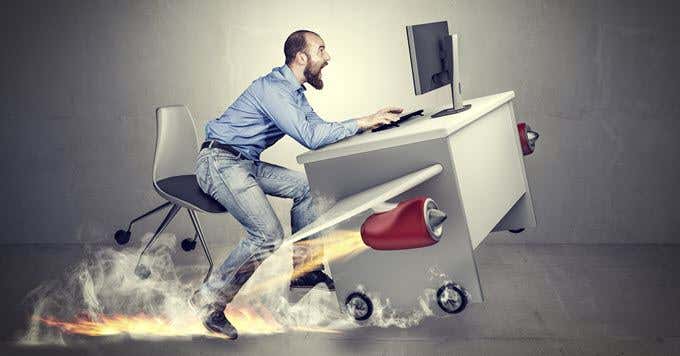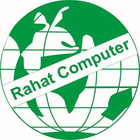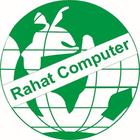Troubleshooting Slow Performance On A Desktop

Have you ever found yourself staring at a spinning wheel or hourglass icon on your computer screen, waiting for a simple task to be completed? Slow performance on a desktop can be incredibly frustrating, especially when you have important work to do. In this article, we will explore some common causes of slow performance on a desktop and provide practical troubleshooting tips to help you get your computer running smoothly again. Whether you’re a tech-savvy individual or a complete novice, these tips will help you identify and address the underlying issues that may be slowing down your desktop. So, grab your keyboard and let’s get started!
Related: Buy Best Desktops in Oman
Troubleshooting Slow Performance On A Desktop:
If your desktop computer is running sluggishly, it can be frustrating and hinder your productivity. Fortunately, there are several troubleshooting steps you can take to improve its performance.
First, check for any unnecessary programs or applications running in the background. These can consume valuable system resources and slow down your computer. Use the Task Manager to identify and close any unnecessary processes. Additionally, consider uninstalling any programs that you no longer use or need.
Next, ensure that your desktop has sufficient storage space. A full hard drive can significantly impact performance. Delete any unnecessary files or move them to an external storage device. You can also use disk cleanup tools to free up space and optimize your system.
Another potential cause of slow performance is malware or viruses. Run a thorough scan using your preferred antivirus software to identify and remove any infections. Regularly updating your antivirus program and performing scans can help prevent future issues.
Moreover, outdated or incompatible drivers can affect your desktop’s performance. Check for any available updates for your graphics card, network adapter, and other important hardware components. Updating these drivers can enhance stability and improve overall performance.
Lastly, consider upgrading your hardware if necessary. Adding more RAM or upgrading to a solid-state drive (SSD) can significantly boost your desktop’s speed and responsiveness. Research compatible hardware options and consult with a professional if needed.
By following these troubleshooting steps, you can address the underlying issues causing slow performance on your desktop and enjoy a faster and more efficient computing experience.
Identifying Potential Causes and Solutions
One common issue that desktop users may encounter is slow performance. This can be frustrating and hinder productivity. However, by identifying and addressing potential causes, you can improve the speed and efficiency of your desktop.
Potential Causes:
- Insufficient RAM: If your desktop has limited random access memory (RAM), it may struggle to handle multiple tasks and run applications smoothly. Consider upgrading your RAM to improve performance.
- Outdated Hardware: Older desktop models may not have the processing power needed for modern software and applications. Upgrading to a newer and more powerful desktop may be necessary.
- Software Issues: Certain programs or files running in the background can consume a significant amount of system resources, leading to slow performance. Use task manager to identify these resource-intensive processes and consider uninstalling or disabling them.
| Potential Causes | Solutions |
|---|---|
| Insufficient RAM | Upgrade RAM |
| Outdated Hardware | Invest in a newer desktop |
| Software Issues | Identify and disable resource-intensive programs |
Potential Solutions:
- Clear Disk Space: A cluttered hard drive can slow down your desktop. Delete unnecessary files and programs to free up space and improve performance.
- Run Antivirus Scan: Malware and viruses can significantly impact system performance. Use a reliable antivirus software to scan and remove any malicious programs.
- Update Software and Drivers: Outdated software and drivers can cause compatibility issues and slow down your desktop. Regularly update your operating system, applications, and drivers to ensure optimal performance.
Analyzing Software and Hardware Configurations: Optimizing Performance
Software Configurations
The first step in troubleshooting slow performance is to examine the software configurations on your desktop. Here are some key areas to focus on:
- Check for resource-heavy programs: Identify any applications or processes that may be utilizing a significant amount of your desktop’s resources. These can include resource-hungry software, background processes, or unnecessary browser extensions.
- Update your operating system: Ensure that your desktop is running the latest version of your operating system. Updates often include performance improvements and bug fixes that can help enhance your desktop’s speed.
- Optimize startup programs: Review the programs that launch automatically when your desktop starts. Disable any unnecessary applications to reduce the load on your system.
Hardware Configurations
In addition to software configurations, hardware settings can also impact your desktop’s performance. Here are some hardware-related aspects to consider:
- Check your RAM: Insufficient RAM can significantly slow down your desktop. Ensure that you have enough memory for your tasks and consider upgrading if necessary.
- Monitor your storage: A full or fragmented hard drive can lead to decreased performance. Regularly clean up unnecessary files and defragment your hard drive to optimize its efficiency.
- Inspect your cooling system: Overheating can cause your desktop to throttle its performance. Clean the cooling fans and ensure proper airflow to prevent overheating.
By analyzing and tweaking both software and hardware configurations, you can effectively troubleshoot and optimize the performance of your desktop. Remember to regularly maintain your system to prevent any future slowdowns. We hope these tips help you get your desktop back up to speed!
Clearing System Clutter and Streamlining Processes: Boosting Speed
Is your desktop running slower than usual? Are you experiencing delays and sluggishness while performing everyday tasks? Don’t worry, you’re not alone. Slow performance on a desktop can be frustrating, but there are several troubleshooting steps you can take to clear system clutter and streamline processes, ultimately boosting speed and improving overall performance.
One of the first things you can do is to clean up your desktop. Having a cluttered desktop can slow down your computer, as it takes longer to load all the icons and files. Take a few minutes to organize your desktop and delete any unnecessary files or shortcuts. You can create folders to categorize your files and keep everything neat and tidy. By doing so, you’ll not only improve the speed of your desktop, but also enhance your productivity by easily finding the files you need.
Another effective way to boost speed is to uninstall any unused or unnecessary software. Over time, you may have installed various programs that you no longer use, but they may still be running in the background and consuming system resources. Go to your control panel or settings menu and uninstall any programs that you no longer need. This will free up valuable space on your hard drive and help your desktop run faster. Additionally, make sure to regularly update your software to take advantage of any performance enhancements and bug fixes.
Enhancing System Security and Updating Drivers: Maximizing Efficiency
Are you experiencing slow performance on your desktop? Don’t worry, we’re here to help! There are a few troubleshooting steps you can take to enhance your system’s security and maximize efficiency. By following these tips, you’ll be able to get your desktop running smoothly in no time.
First, let’s focus on enhancing system security. **Keeping your system secure** is essential to preventing any potential threats or malware that could be causing your desktop to slow down. Here are a few steps you can take:
- Install and regularly update a reliable antivirus software.
- Enable automatic updates for your operating system and third-party applications.
- Regularly scan your computer for viruses and malware.
- Use strong, unique passwords for all your accounts.
Next, let’s talk about updating drivers. **Outdated drivers** can cause performance issues and slow down your desktop. By ensuring that all your drivers are up to date, you can optimize your system’s performance. Here’s what you can do:
- Visit the manufacturer’s website to check for driver updates for your specific hardware.
- Use a reliable driver update software to automate the process.
- Regularly check for updates and install them as soon as they become available.
By following these steps, you’ll be able to troubleshoot slow performance on your desktop and maximize its efficiency. Remember to regularly maintain your system’s security and keep your drivers updated for optimal performance.
Final Thoughts
In conclusion, troubleshooting slow performance on a desktop can be a frustrating and time-consuming task. However, by following the steps outlined in this article, you can identify and resolve the issues causing your computer to run sluggishly. Remember to stay patient and thorough in your troubleshooting efforts, and don’t hesitate to seek professional help if needed. With a little perseverance, you can get your desktop running at its optimal speed once again. Good luck!



